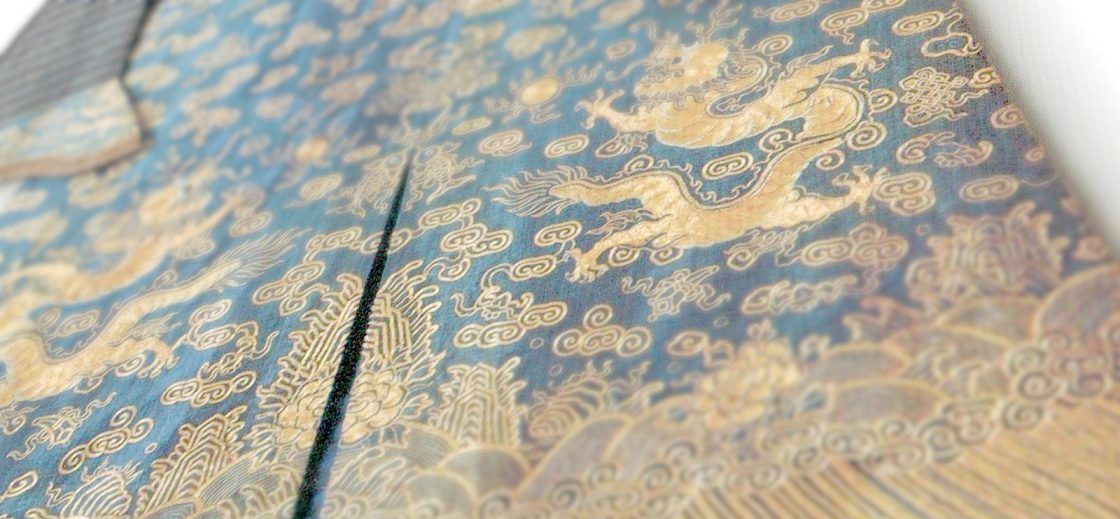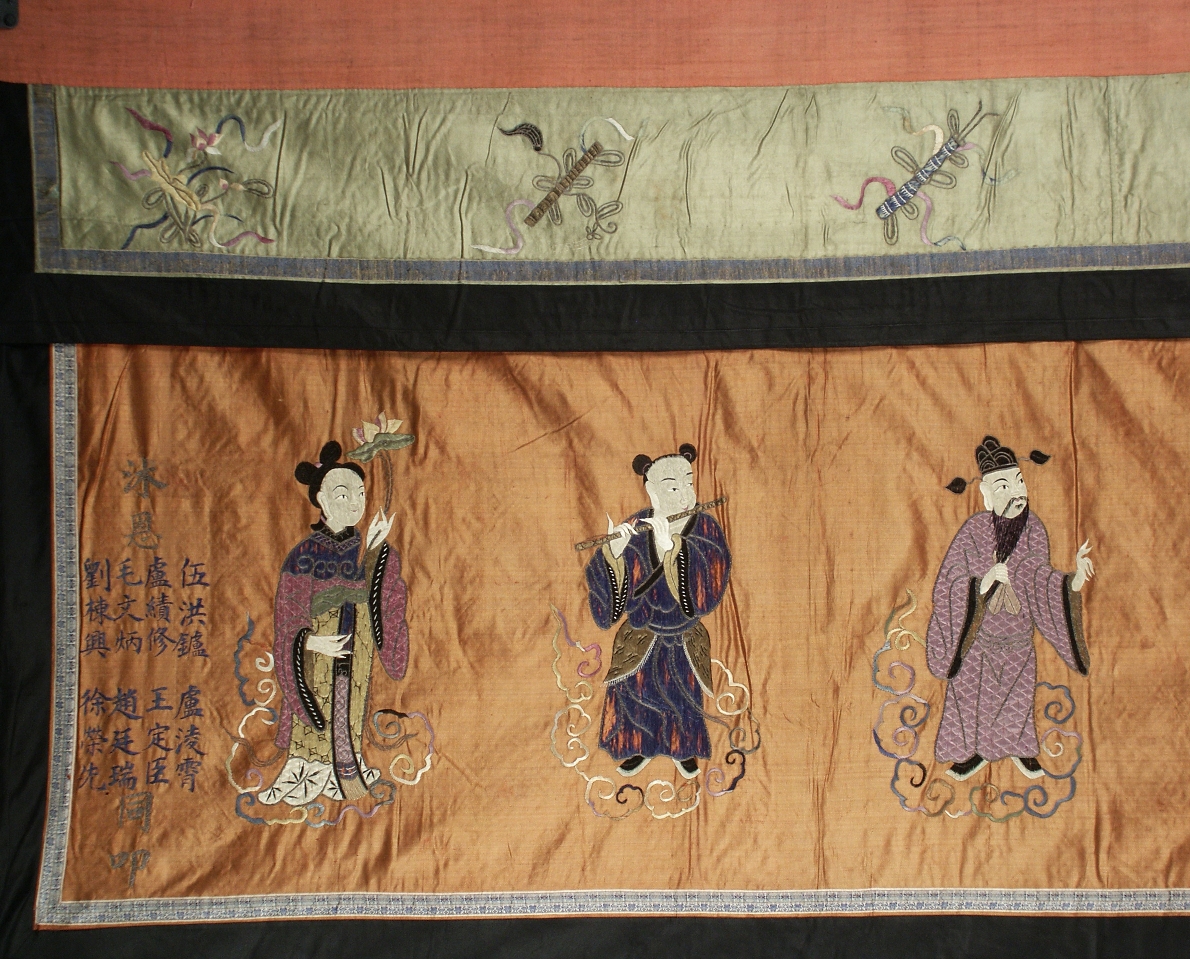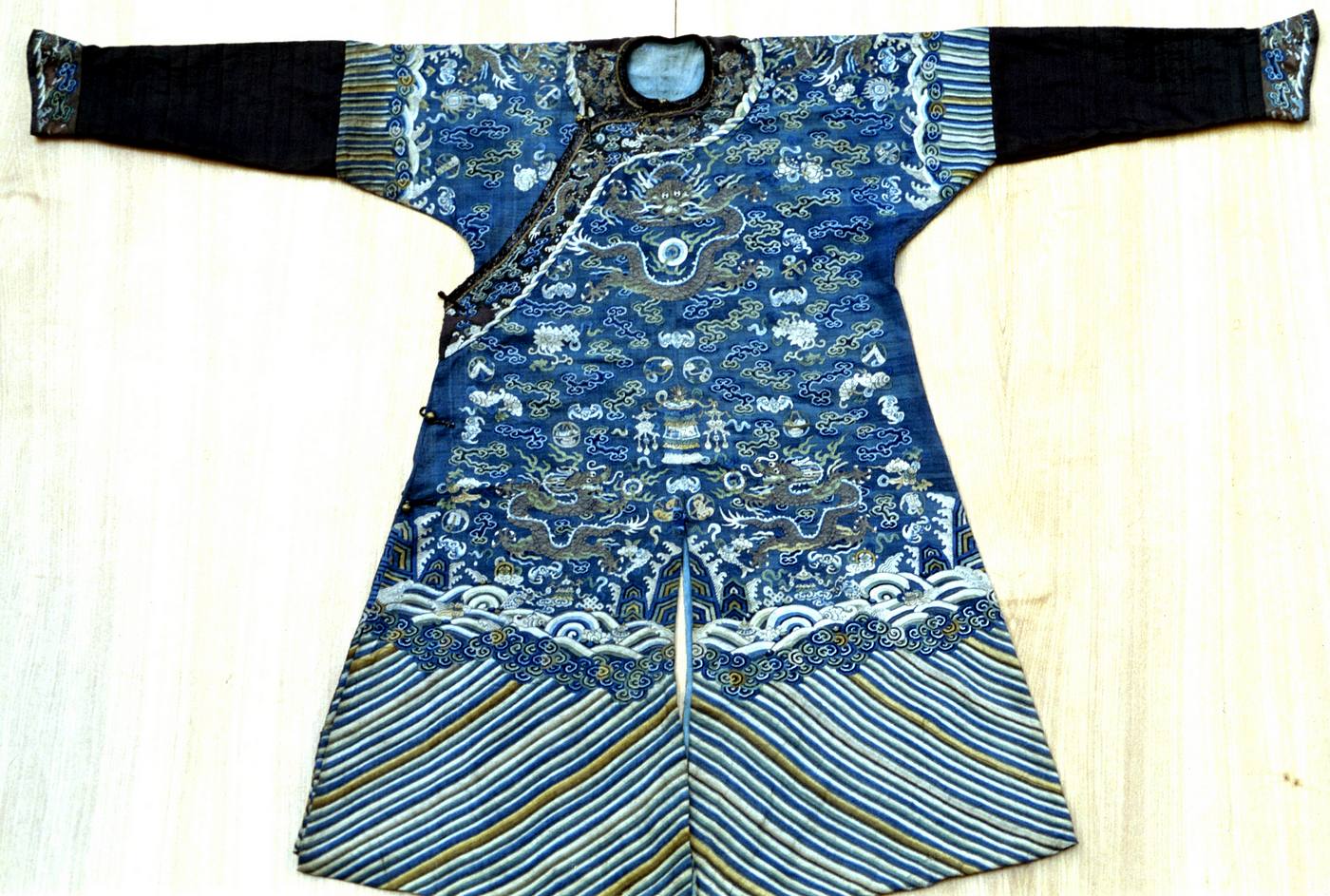Silk costumes and textiles

Prof. Nicoletta Celli
Lustrous and valuable as gold, silk cloth is one of the most important Chinese inventions, together with the equally momentous development of the processes of paper making and printing

Hanging embroidered panel with Eight Immortals
Although a charming legend places the discovery of the properties of silk in a mythical age at the dawn of time, the most recent archaeological finds confirm that the earliest examples of silk fabric date from the middle of the fourth millennium BC.
From this remote period on, the history of silk is documented by numerous other finds supported by indirect evidence illustrating technical developments in weaving, dyeing and embroidery, as well as the infinite uses made of this sumptuous material.
Aside from its popularity as a clothing material, silk was also employed as a means of paying taxes, as a support for writing and painting, in various forms of decoration and to make containers for precious objects. It was precisely thanks to this versatility that silk became such an important item of trade.
The preciousness of this material is made plain by another legend which tells of the spread of the secret of silk production throughout Central Asia thanks to a Chinese princess, sent to marry a local potentate.
This tale provides a fictional reconstruction of the diffusion of silk growing in the Tarim Basin (the present-day province of Xinjiang) in around the third century AD, an event that marked the loss of the Chinese monopoly of silk production and paved the way for the arrival of the “secret” of silk in the West.
The museum collection includes several pieces exemplifying the high levels of refinement silk weaving attained, represented by court dress and embroidered wall hangings used on special occasions.
Numerous edicts were introduced concerning appropriate court attire during the last Chinese dynasty, culminating in 1759 in the publication of a series of laws establishing the proper costumes and accessories for all the members of the court, from the emperor right down to the lowliest official. The regulations identified three different types of outfit: court garb (chaofu), used on solemn, official occasions; festive clothing (jifu), worn on less formal occasions, and everyday dress (changfu), suitable for all normal circumstances not requiring ceremonial garb, such as the emperor’s private life. The dragon-robe (longpao) is the main item of festive dress. It was a long, flared robe with tight sleeves, ending in horse-hoof cuffs, and in the male imperial version included four vertical vents (two central ones, front and back, and two side vents).

Longpao - Dragons' Dress Embroidered silk
The longpao displayed is an example of the kind of dress worn in the palace during the Qing Dynasty. A rich and sophisticated decoration sweeping up the robe from the bottom represents the universe. A series of multicolored diagonal stripes depict the waters sweeping up (lishui) from the depths of the ocean. Mountain peaks emerge from the frothing waves and are arranged at the four cardinal points. The remaining space, representing the sky, is occupied by floating dragons, symbolizing the emperor’s power. Only the emperor and very few other high-ranking members of his household were allowed to wear outfits with nine dragons (eight visible and one hidden in the top right-hand corner under the fold in the robe).
The five-clawed dragon (long) was strictly speaking reserved exclusively for the sovereign and his immediate family, although there are several examples of this rule being flouted, while four-clawed dragons (mang) decorated the robes of other members of the court. A blue robe would probably have been worn on days of fasting and purification prior to the sacrifices performed in the Altar of Heaven (Tiantan) in Beijing at the winter solstice.

